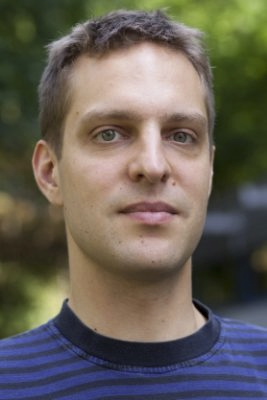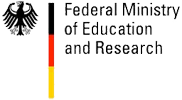| Foto | First Name | Last Name | Position |
|---|---|---|---|
 |
Klaus | Hildebrandt | Applies Geometry |
 |
Matthias | Hullin | Computational Transient Imaging |
 |
Ivo | Ihrke | Generalized Image Acquisition and Analysis |
 |
Andreas | Karrenbauer | Discrete Optimization |
 |
Michael | Kerber | Topological and Geometric Computing |
 |
Haricharan | Lakshman | Immersive Video |
 |
Hendrik | Lensch | General Appearance Acquisition |
 |
Hendrik | Lensch | General Appearance Acquisition |
 |
Yangyan | Li | Semantic Reconstruction from Point Cloud |
 |
Markus | Magnor | Graphics - Optics - Vision |
Researcher
 |
Dr. Michael Zollhöfer |
Visual Computing, Deep Learning and Optimization
| Name of Research Group: | Visual Computing, Deep Learning and Optimization |
| Homepage Research Group: | web.stanford.edu/~zollhoef |
| Personal Homepage: | zollhoefer.com |
| Mentor Saarbrücken: | Hans-Peter Seidel |
| Mentor Stanford: | Pat Hanrahan |
| Research Mission: | The primary focus of my research is to teach computers to reconstruct and analyze our world at frame rate based on visual input. The extracted knowledge is the foundation for a broad range of applications not only in visual effects, computer animation, autonomous driving and man-machine interaction, but is also essential in other related fields such as medicine and biomechanics. Especially, with the increasing popularity of virtual, augmented and mixed reality, there comes a rising demand for real-time low latency solutions to the underlying core problems. My research tackles these challenges based on novel mathematical models and algorithms that enable computers to first reconstruct and subsequently analyze our world. The main focus is on fast and robust algorithms that approach the underlying reconstruction and machine learning problems for static as well as dynamic scenes. To this end, I develop key technology to invert the image formation models of computer graphics based on data-parallel optimization and state-of-the-art deep learning techniques. The extraction of 3D and 4D information from visual data is highly challenging and under-constraint, since image formation convolves multiple physical dimensions into flat color measurements. 3D and 4D reconstruction at real-time rates poses additional challenges, since it involves the solution of unique challenges at the intersection of multiple important research fields, namely computer graphics, computer vision, machine learning, optimization, and high-performance computing. However, a solution to these problems provides strong cues for the extraction of higher-order semantic knowledge. It is incredibly important to solve the underlying core problems, since this will have high impact in multiple important research fields and provide key technological insights that have the potential to transform the visual computing industry. In summer 2019 Michael Zollhöfer joined Facebook. |
Researcher
- Name of Researcher
- Stefanie Wuhrer
- Homepage of Research Group
- First Name
- Stefanie
- Last Name
- Wuhrer
- Foto

- Homepage
- morpheo.inrialpes.fr/~wuhrer/
- Phone
- Position
- Non-Rigid Shape Analysis
- Mentor in Saarbruecken
- Hans-Peter Seidel
- Mentor in Stanford
- Categories
- Former Groups
- Research Mission
- Shape analysis aims to describe either a single shape or a population of shapes in an efficient and informative way. This is a key problem in various applications, such as mesh deformation and animation, object recognition, and mesh parameterization. In order to analyze a population of shapes, intrinsic correspondence information between the shapes is required. This group’s work focuses on automatically computing intrinsic correspondence information between non-rigid shapes and on applying this information. Automatically computing intrinsic correspondence information between non-rigid shapes is a challenging problem because local regions on the surface are often not distinctive, especially as the surface undergoes large non-rigid deformations. Hence, to solve this problem, we assume prior knowledge about the geometry of the shapes to be registered, or about the type of deformation applied to the shapes. Once the correspondence information is available, we may use it in applications, such as morphing one shape into another, segmenting a population of shapes automatically, or extracting meaningful information from a population of shapes. For instance, we can learn information from a population of shapes and use this information as prior knowledge to synthesize a new shape based on partial information, such as 2D image information, partial scans, or measurements. This is of particular interest since most methods for acquiring 3D data obtain only partial surface data. In February 2015 Stefanie Wuhrer joined INRIA Grenoble Rhône-Alpes in France as a research scientist.
- mission_rtf
- Name of Research Group
- Non-Rigid Shape Analysis
Personal Info
- Photo

- Website, Blog or Social Media Link



